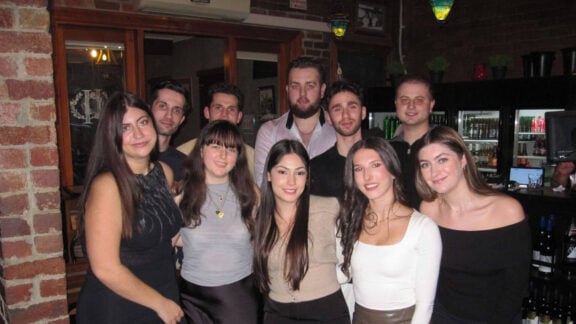Many more Prep students in Victoria will be learning a language by 2015 according to a far-reaching plan announced by the state government.
The bold initiative to increase and improve the teaching of languages in Victorian schools and to reverse a 30 per cent decline over the last ten years in the number of primary schools offering a language was unveiled this week at the launch of The Victorian Government’s Vision for Languages Education.
Hosted by Victorian Education Minister Martin Dixon and Minister for Multicultural Affairs and Citizenship Nicholas Kotsiras, the launch announced new scholarships for teachers, as part of the Coalition government’s expressed commitment that all government school students in Victoria, from Prep to Year 10, would be learning a language by 2025.
The Education Minister also announced that the government’s vision would be implemented by offering start-up grants to schools to encourage the introduction of languages programs. Scholarships of up to $20,000 for undergraduate teachers and $50,000 for schoolteachers to become qualified languages teachers, and a Certificate IV in Community Languages Teaching at Victoria’s TAFE institutes will be introduced.
Mr Dixon said the Victorian Government had already trained 30 languages teachers to teach subjects such as science and history in another language, and funded 14 school clusters involving 103 schools to trial new approaches to languages education.
The minister reported that the Victorian Government had already provided $16.3 million to accredited Community Languages Schools to support after-school-hours languages education for students, and $280,000 to enhance the sister-school program, linking Victorian schools with schools across Australia and overseas.
“The Victorian Government knows that when students learn another language they also improve their first language, develop better problem solving skills, and increase their awareness and respect of other people and cultures,” Mr Dixon said.
Claire Read, Principal of Lalor North Primary School, told Neos Kosmos that the new support offered was warmly welcomed.
“There’s a lot of research which shows that bilingual students have better outcomes overall. At Lalor North we have many students who are learning two languages and developmentally it’s really positive for them.”
Lalor North, which began its Greek language program in the 1970s, has a long established commitment to languages education and currently offers three language options for Prep and Grade 1.
“Many people think it may be difficult or confusing for them, but actually we have students that move between two languages with great facility,” said Ms Read, adding that despite a crowded curriculum, in her experience introducing and expanding languages education had huge benefits.
“When you see students who are able to communicate in different languages the learning outcomes improve; it’s fantastic and it’s worth giving it a go.”
Jean Hellerud, Principal of Clarinda Primary School, renowned for its Greek program from Prep to Grade 6, also welcomed the announcement.
“It’s very good news. We’re a small school on a small budget and I would love to be able to teach an Asian language. Perhaps the new start-up grants can help us,” said Ms Hellerud, who believes sustaining the teaching of a new language would be the challenge. “It’s the long-term funding of it that would become an issue.”
Multicultural Minister Nicholas Kotsiras said he believed Victoria owed it to its young people to equip them with the linguistic and intercultural skills needed to succeed in a competitive and globalised world.
“When we look overseas, we see languages being taught as a central part of the curriculum and we see how these nations capitalise on the success of their bilingual and multilingual citizens.
“The non-English speaking world – including our closest neighbours and most important trading partners – are learning English in addition to their own languages. Imagine the opportunities and possibilities if we in Victoria are doing the same.”








